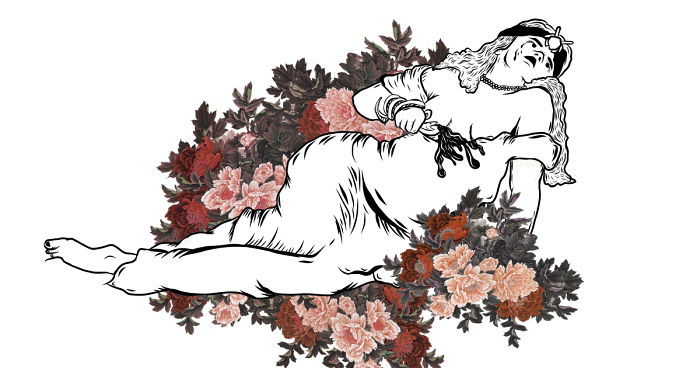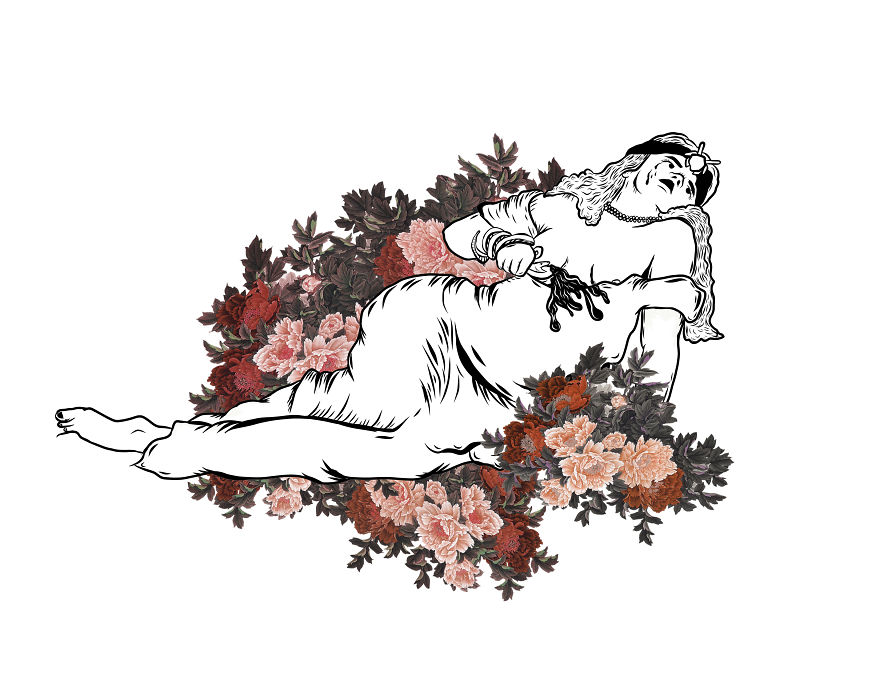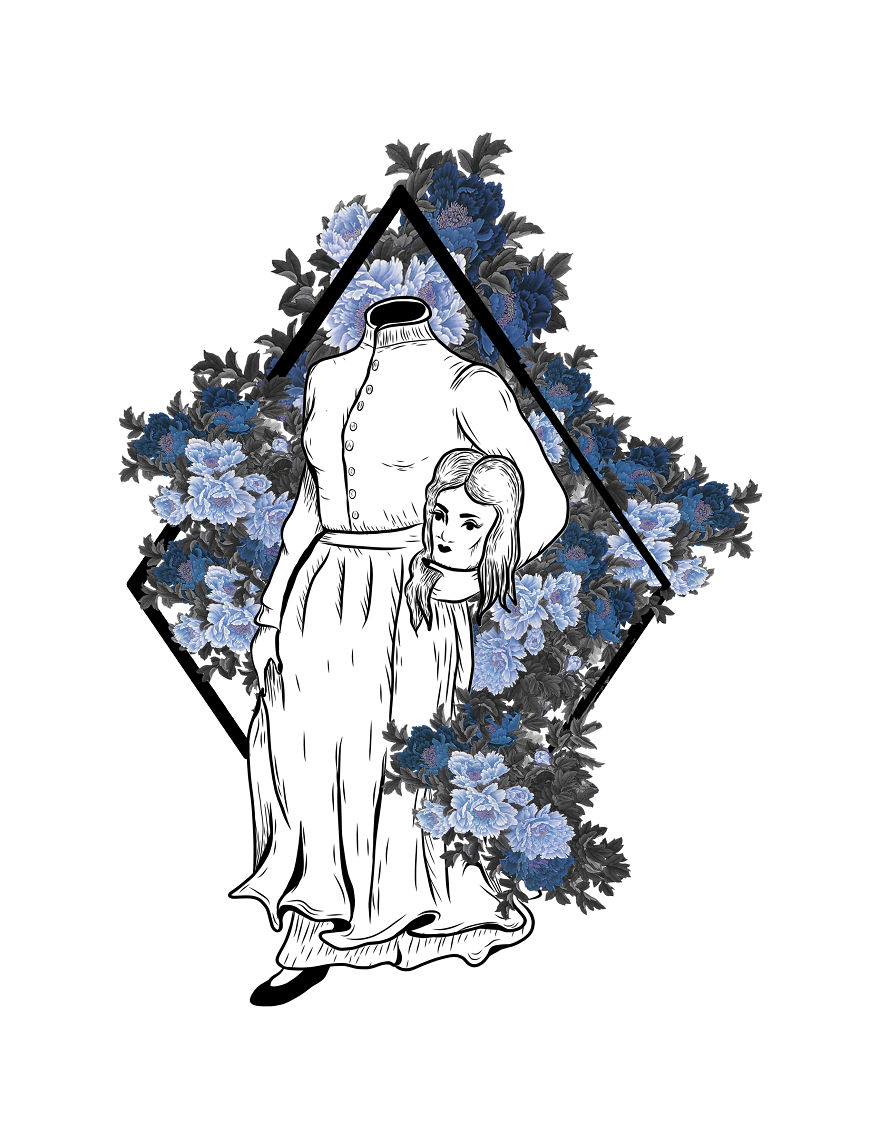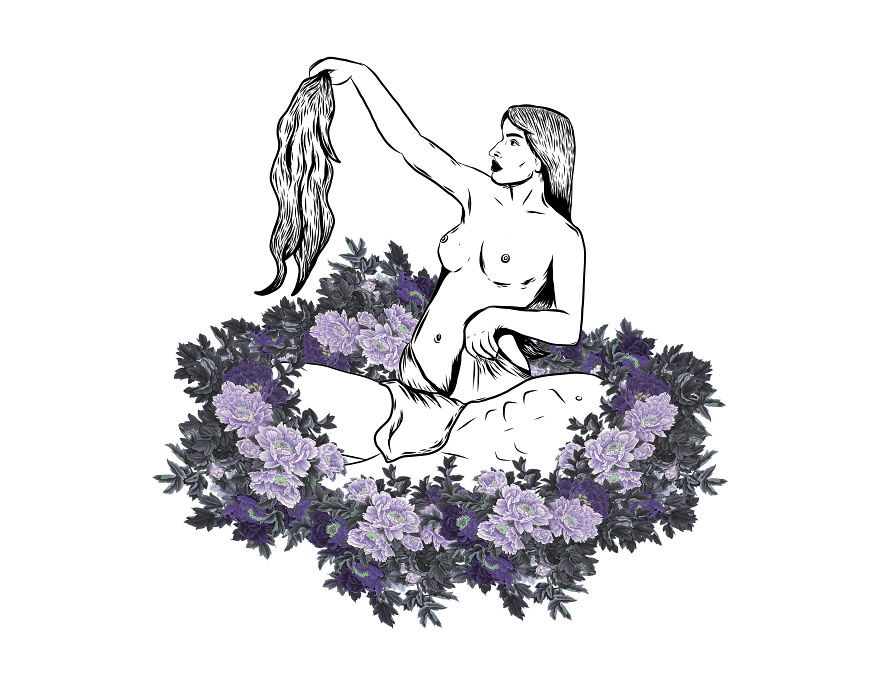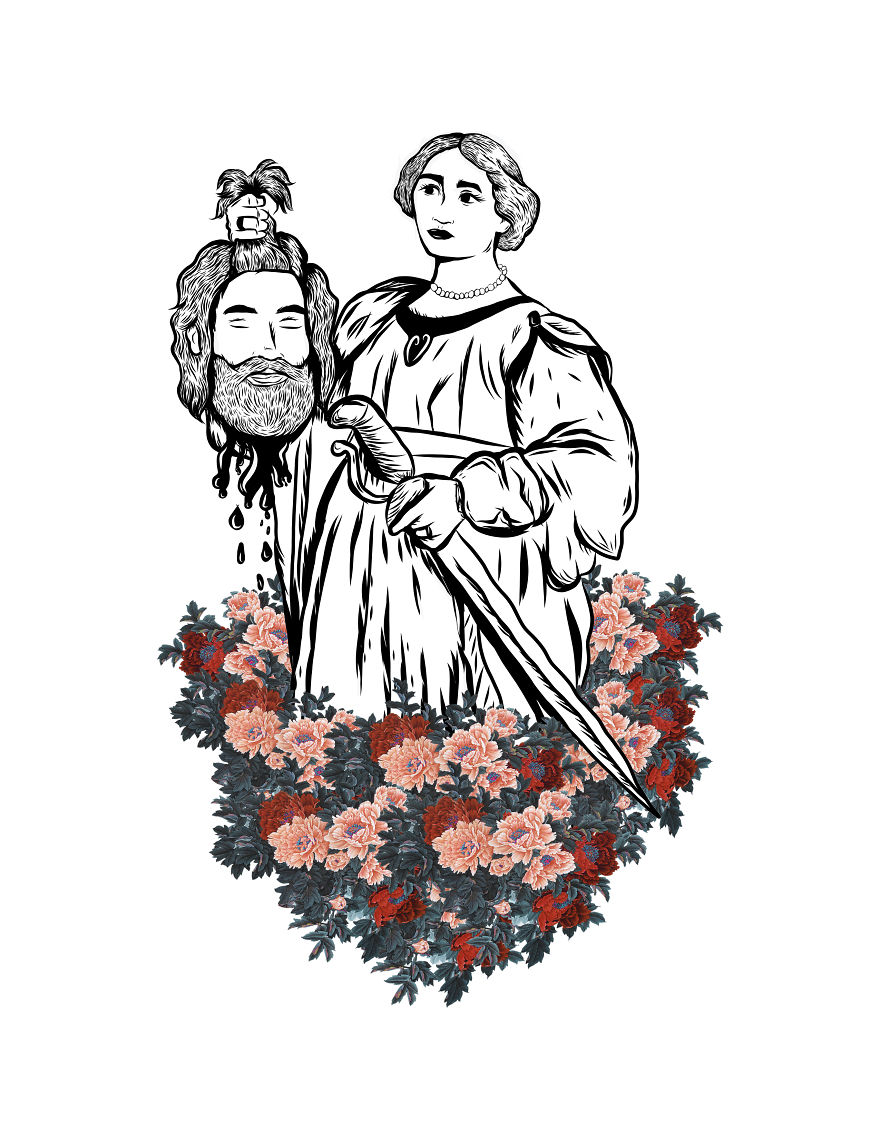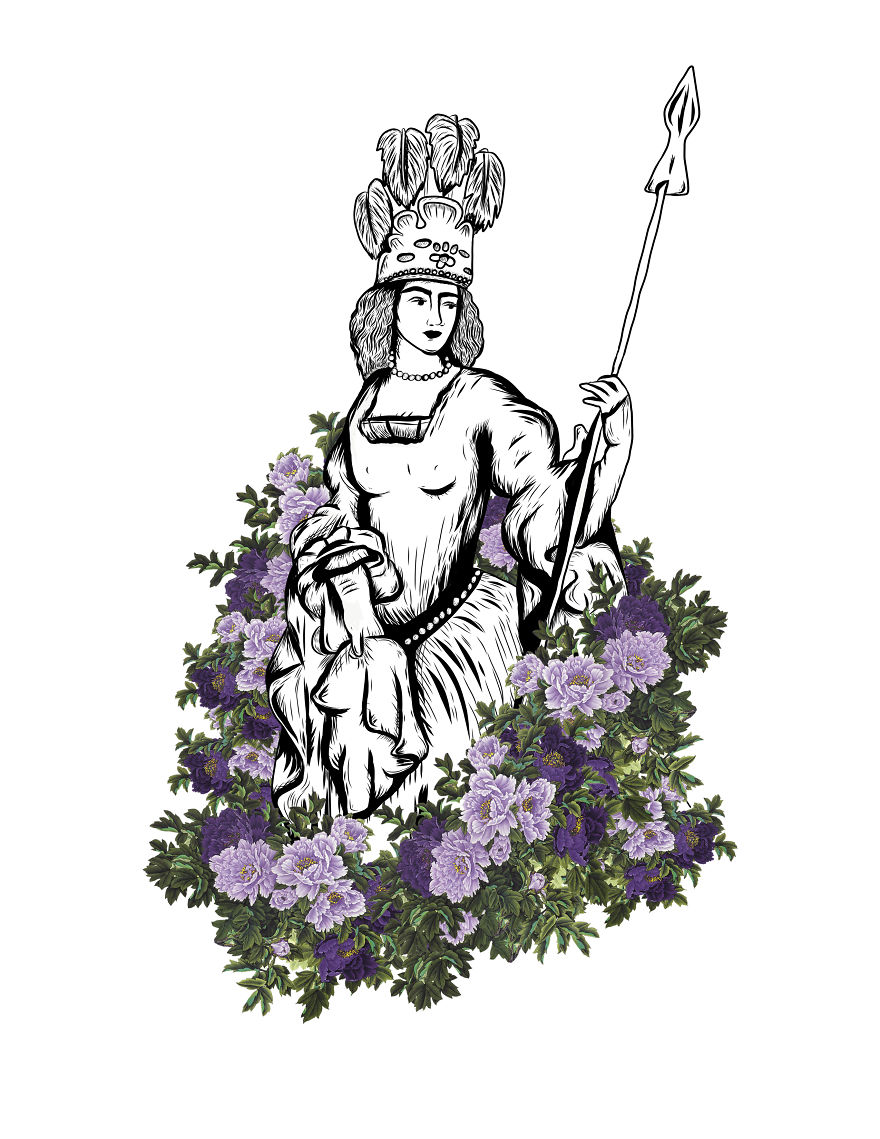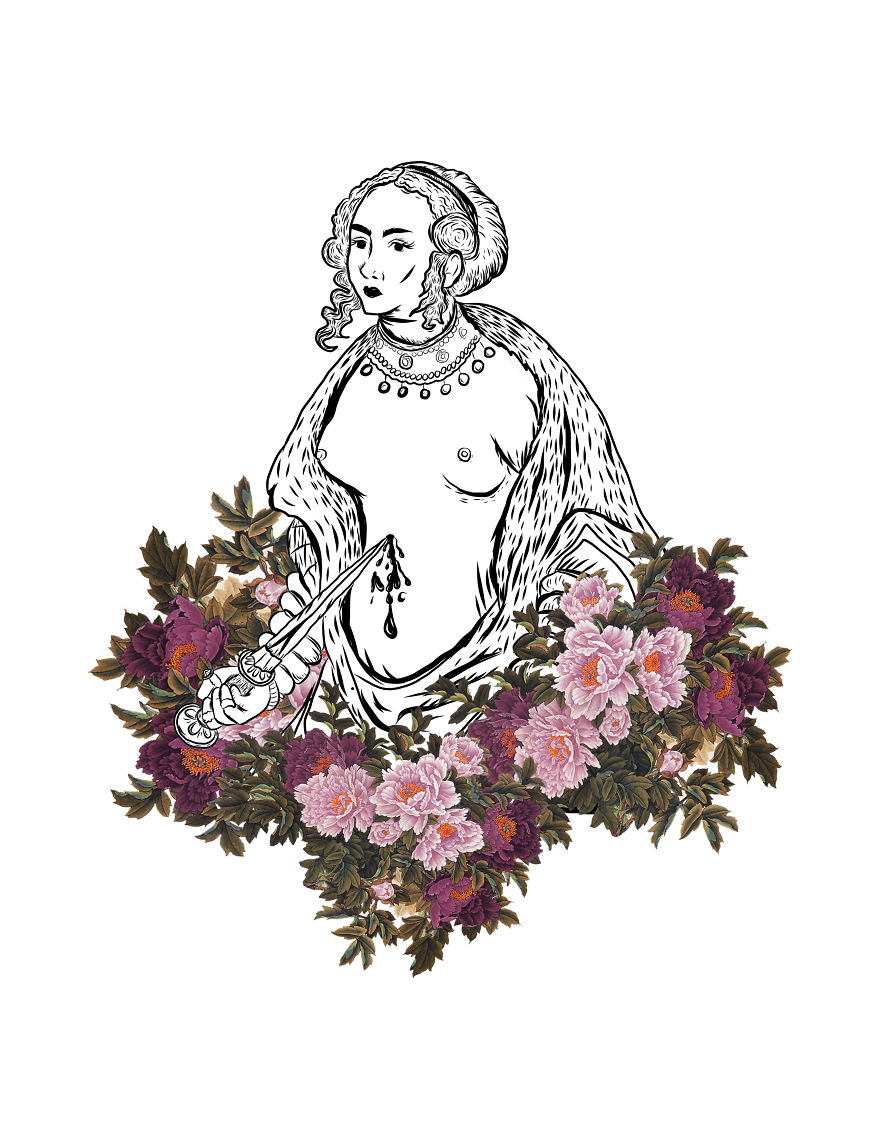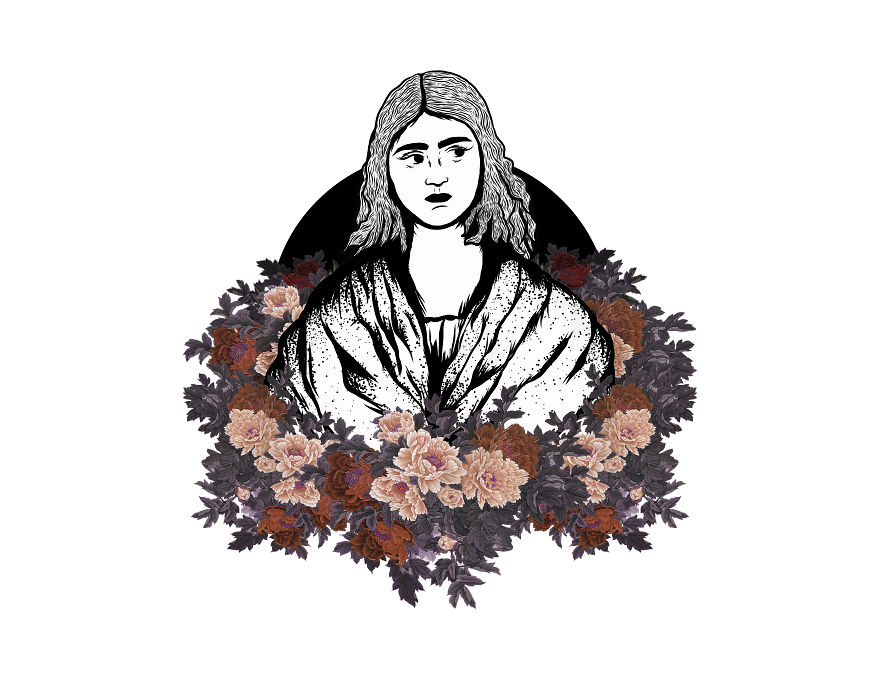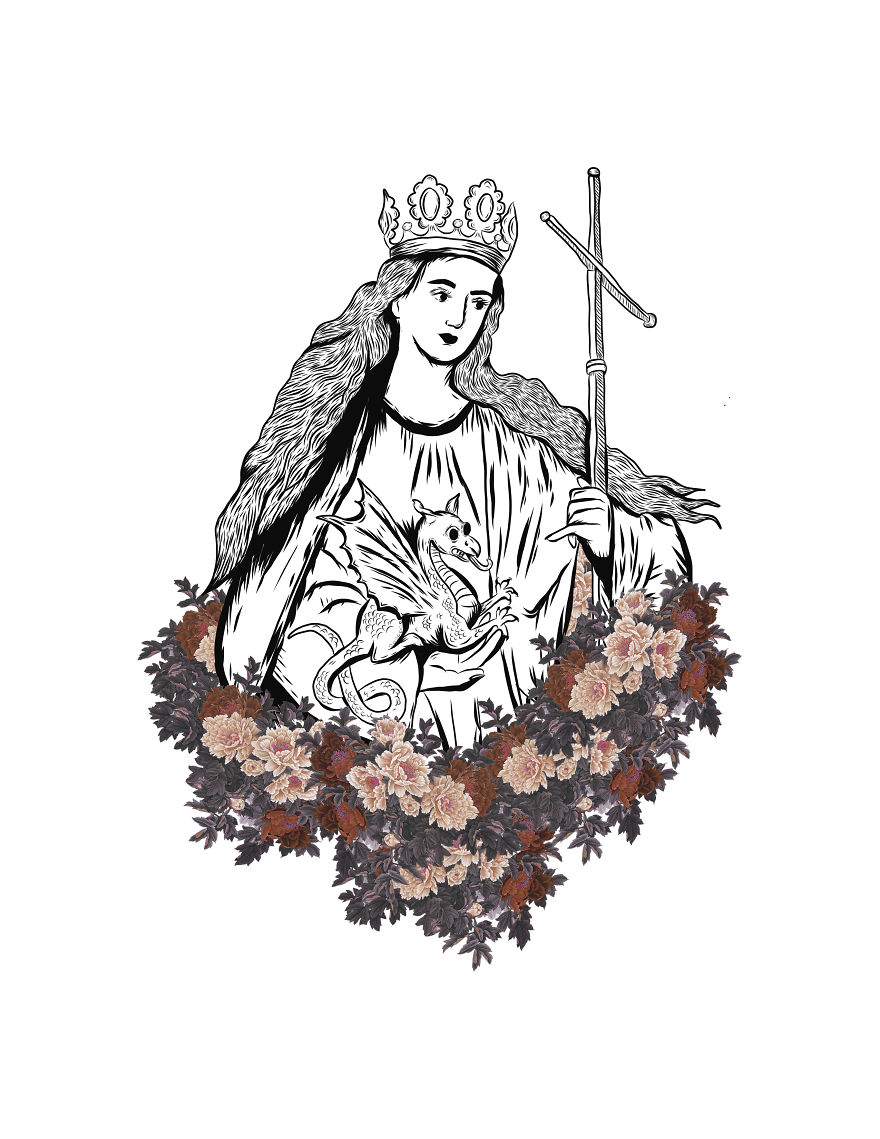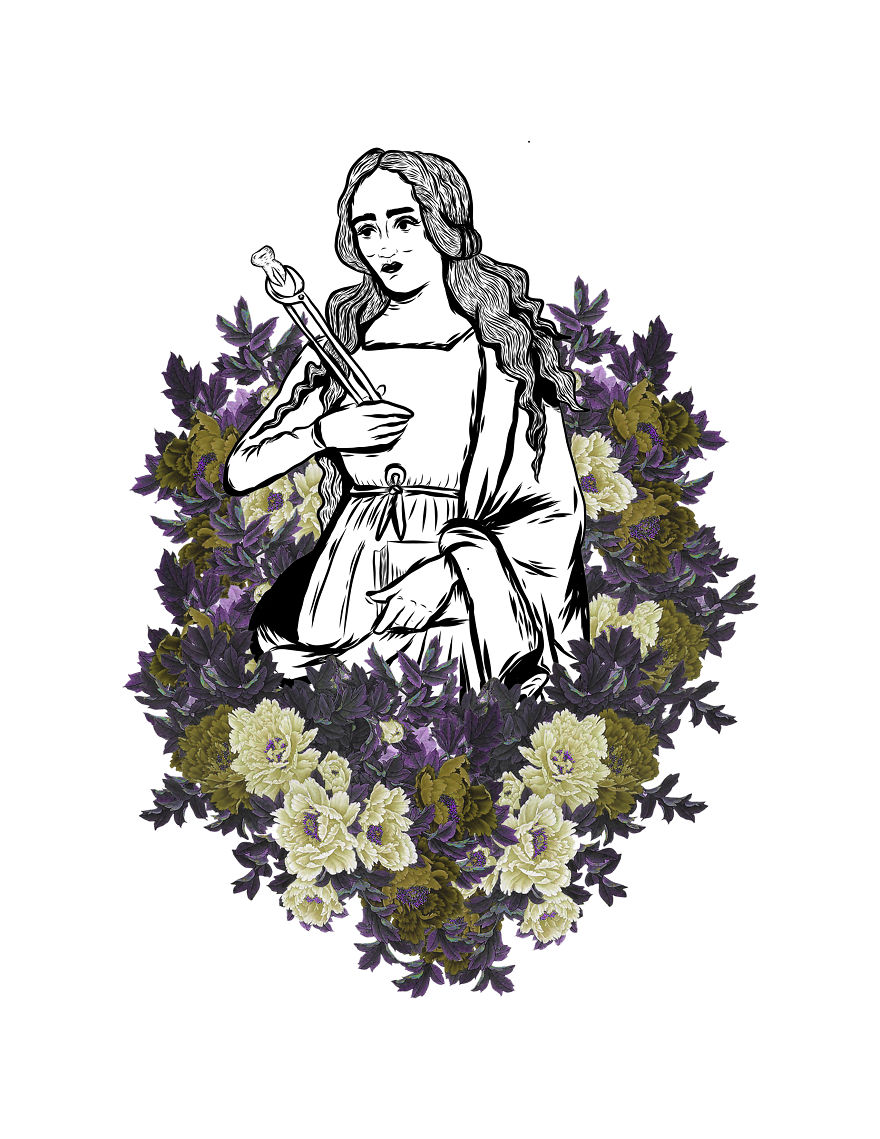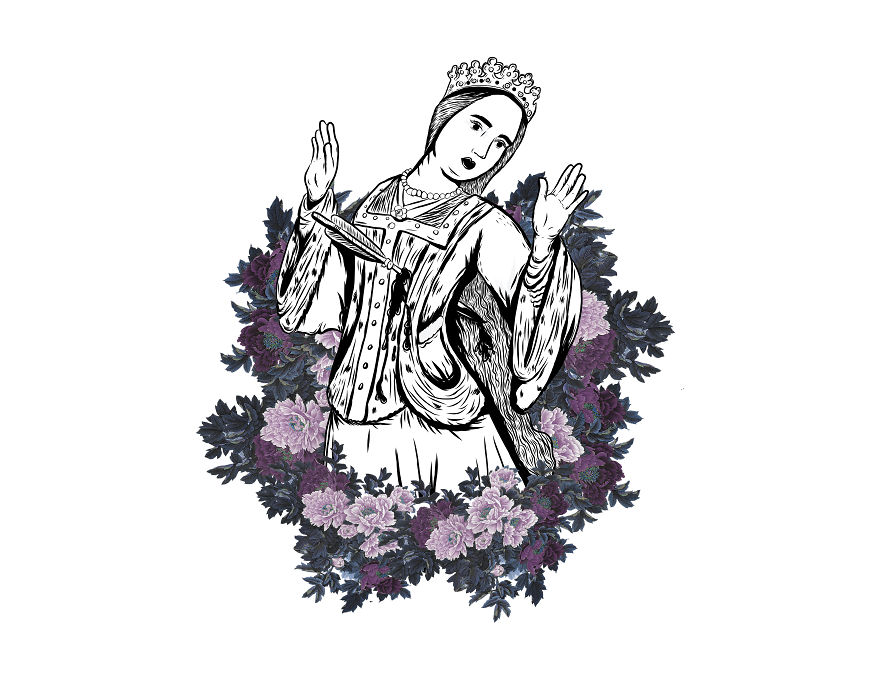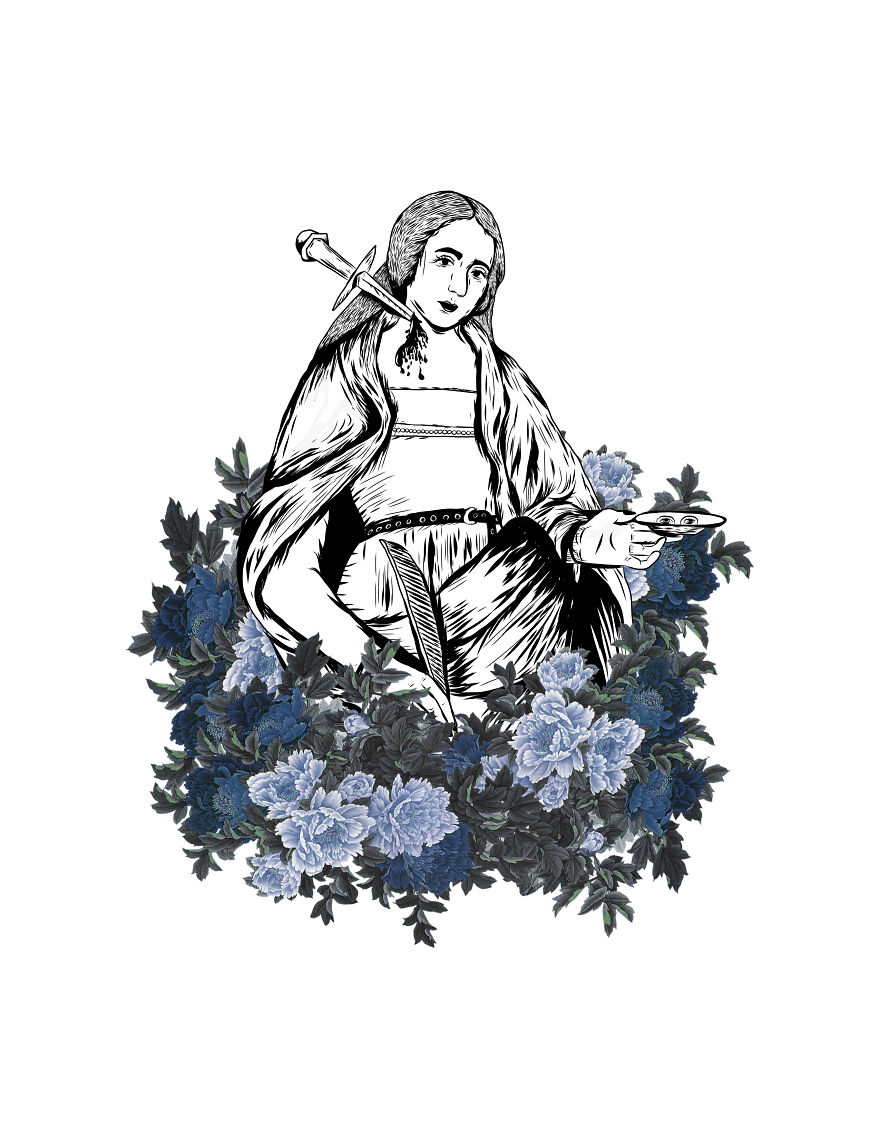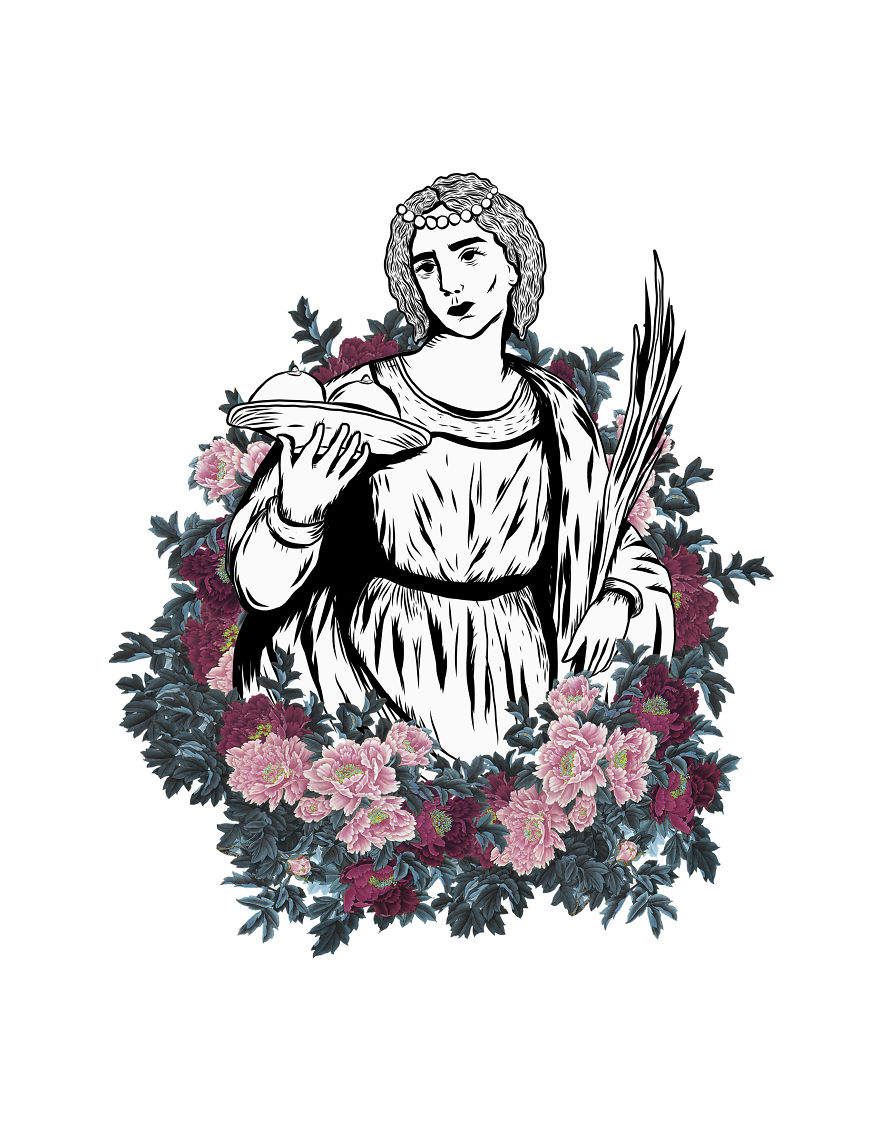Each one carefully selected and researched, according to their stories, these women have faced adversity, pain, drama, all through the lens of their passion.
All illustrations were done by me, Tricia Robinson, a female illustrator in Montreal, Quebec. Each illustration can be purchased as a print in my Etsy shop.
More info: Etsy
This post may include affiliate links.
Cleopatra
According to stories, Cleopatra committed suicide by allowing an asp (Egyptian cobra) to bite her breast. By doing so, she avoided the humiliation of being flaunted and paraded as a prisoner in a Roman triumph celebrating their military victories. "They saw her stone-dead, lying upon a bed of gold, set out in all her royal ornaments."
The Quiet Woman
"The Quiet Woman" aka St Juthwara - a pious and virtuous woman who fell victim to a jealous stepmother and was beheaded. It is said that after she was beheaded, she arose to pick up her bloodied head, and carried it to church.
Delilah (From Delilah And Samson)
Delilah, loved by Samson, was bribed to entrap him and coaxed him into revealing that the secret of his strength was his long hair, whereupon she took advantage of his confidence to betray him to his enemies. Her name has since become synonymous with a voluptuous, treacherous woman.
Judith And The Head Of Holofernes
In the deuterocanonical book of Judith, she creeps into the Assyrian camp, seduces Holofernes with her captivating beauty, waits until he is thoroughly drunk, and cuts off his head, carrying it back to her camp in victory.
Julie D'aubigny
Julie D'Aubigny, aka Mademoiselle Maupin aka La Maupin, born around 1673, was a flamboyant, openly bisexual, sword-fighting, famous opera-singing radical. Mainly noted for sneaking into a convent as a postulant, stealing the body of a dead nun to set in the bed of her lover, and setting the room on fire to cover their escape. Also known for the numerous duels she won against men, defending the chorus girls of the operas from the sexual advances of men. Lastly, seducing other women and challenging the men who doubted her to duels, even once removing her shirt unabashedly to prove that she was a woman with breasts.
Lucretia
Lucretia's rape and suicide by the son of a King was the reason for the rebellion that overthrew the Roman monarchy and started the Roman Republic.
"She died in her father’s arms, with the women present keening and lamenting. This dreadful scene struck the Romans who were present with so much horror and compassion that they all cried out with one voice that they would rather die a thousand deaths in defense of their liberty than suffer such outrages to be committed by the tyrants."
Madame Restell
Considered to be the most vilified woman of the 19th century, Madame Restell was a self-proclaimed physician with no medical background. She provided advice, preventive powders, and pills for "female afflictions". She also offered abortions in a time when they were illegal and punishable by imprisonment. Restell had been to trial for abortions several times. She advertised her services in newspapers and drew the attention of anti-abortionists, including moral crusader Anthony Comstock. After federal legislation passed, essentially banning all forms of abortion and advertisement for it, Comstock made it his personal mission to hunt down folks who broke these laws, and successfully entrapped Restell so he could have her arrested and tried. This time, there was no trial. April 1st, 1878, Restell's body was found in her bathtub. She had committed suicide. Her servants told reporters that she had been pacing the length of her home, saying "why do they persecute me so? I have done nothing to harm anyone." Comstock's last words on the death of Restell were "a bloody end to a bloody life".
The dot and detail work in the piece is intentional and is meant to be representative of the painstaking amount of times that the debate and legality of abortions have resurfaced. You cannot ban abortion, you can only ban safe access to it.
Saint Margaret Of Antioch
A martyr, who was condemned to cruel torture trials after refusing to renounce her faith. In one of her trials, she is swallowed by Satan in the form of a dragon. She uses her cross to burst through his stomach and escape. She is frequently seen in paintings accompanied by a dragon.
St. Apollonia
St. Apollonia was one of a group of virgin martyrs who suffered in an uprising against the Christians. According to her story, her torture included having all of her teeth violently pulled out or shattered. She's frequently seen in paintings, carrying pincers in which a tooth is held.
Saint Ursula
Saint Ursula was a Romano-British princess believed to have died as a Christian martyr with 11,000 other virgins in Cologne, Germany around 383 C.E. She came with her huge entourage of handmaidens to Rome, where she persuaded Pope "Cyriacus" to join them. Upon their arrival to Cologne, they found the city besieged by the Huns. Ursula's friends were beheaded in a bloody massacre, and the barbarian leader then shot Ursula dead with an arrow. She is traditionally seen in paintings with an arrow sticking out of her chest, and severed heads at her feet.
Saint Lucy
St. Lucy was a Christian martyr, who when refused to renounce her faith, was sentenced to be defiled in a brothel. The story says that when the guards came to take her away, they could not move her, as if she became a pile of stones. The story also says that before she met her death, the guards had been ordered to gouge out her eyes. Some versions of her story say that she took her own eyes out in order to discourage a persistent suitor who admired them. St. Lucy met her death by a sword thrust into her throat.
Saint Agatha
A saint and virgin martyr frequently seen depicted in paintings, carrying her breasts on a platter after having them cut off as a result of professing her faith and rejecting the sexual advances of powerful men.

 Dark Mode
Dark Mode  No fees, cancel anytime
No fees, cancel anytime 




